Home >> Products >> Toilet >> Two-pieces Toilet
Two-pieces Toilet
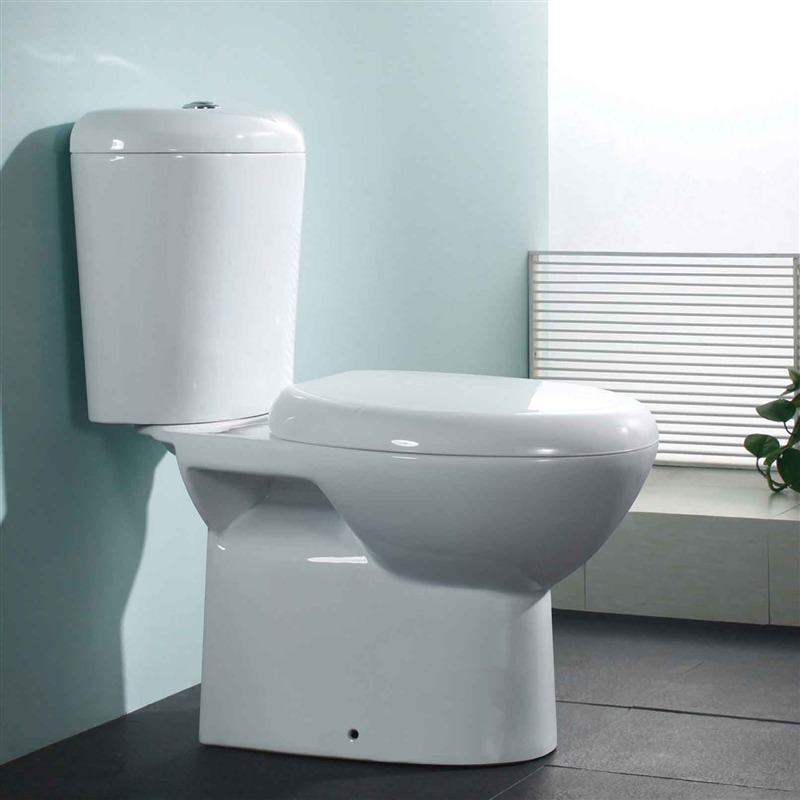
A two-piece attaching seat and toilet bowl lid are typically mounted over the toilet bowl, to allow covering the toilet when it is not in use, and to provide seating comfort while using the toilet.
A toilet's body is made from vitreous china, which starts out as a thin clay mixture called a slip. It takes about 20 kilograms (44 lb) of slip per toilet.
This slip is poured into the space between Plaster of Paris moulds. Toilet bowl, toilet rim, toilet tank and toilet tank lid all require separate moulds. The moulds are assembled and set up for filling and the slip-filled moulds sit for about an hour after filling while the Plaster of Paris moulds absorb moisture from the slip making it semisolid next to the mould but staying liquid further from the surface of the moulds. Then, the workers remove plugs that allow any excess liquid slip from the centers of the mod to pour from the mould—this excess slip is recycled for later use. This drained-out slip leaves voids inside the fixture using less material, keeping it both lighter and easier to fire in a kiln, and it allows the formation of intricate waste lines in the fixture—the drain's centers are poured out as slip. At this point, the toilet parts without their moulds look like and are about as strong as soft clay. After about one hour the top core mould (interior of toilet) is removed. The rim mould bottom, which includes a place to mount the holding tank is removed, and it has the appropriate slanted holes for the rinsing jets cut and the mounting holes for tank and seat are punched into the rim piece. Large flapper valve holes for rapid water entry into the toilet are cut into the rim pieces. The exposed top of the bowl piece is then covered with a thick slip and the still uncured rim piece is attached on top of the bowl piece. The bowl and hollow rim are now a single piece. The bowl plus rim is then inverted and the toilet bowl is set upside down on the top rim mould to hold the pieces together as they dry. Later all the rest of the mould pieces are removed. As the clay dries further it hardens more and continues to shrink. After a few hours the casting is self-supporting, and is called greenware. After the moulds are removed workers use hand tools and sponges to smooth the edges and surface of the greenware and remove the mould joints or roughness: this is called fettling. For large scale production pieces these steps may be automated. The parts are then left outside or put in a warm dry room to dry before going through a dryer at about 93°C (200°F), for about 20–36 hours.[10]
After finishing the surfaces, the bowls and tanks are sprayed with glaze of various kinds to get different colors. This glaze is designed to shrink and contract at the same rate as the greenware while undergoing firing. After being sprayed with glaze the toilet bowls, tanks, and lids are placed in stacks on a conveyor belt or "car" that slowly goes through a large kiln to be fired. The belt slowly moves the glaze covered greenware into a tunnel kiln, which has different temperature zones inside it starting at about 200°C (400°F) at the front, increasing towards the middle to over 1,200°C (2,200°F) degrees and exiting around out 90°C (200°F). During the firing in the kiln, the greenware and glaze are vitrified as one solid finished unit. Transiting the kiln takes glaze covered greenware around 23–40 hours.
When the pieces are removed from the kiln and fully cooled, they are ready for inspection for cracks. After inspection, the flushing mechanism may be installed on a one piece toilet. On a two piece toilet with a separate tank the flushing mechanism may only be put on the tank with final assembly waiting installation. The seat too may be installed at this time, or the parts may be sold separately and assembled by a plumbing distributor.
See More>>Latest Hot Sale
How to Choose a fine Two-pieces Toilet
A two-piece attaching seat and toilet bowl lid are typically mounted over the toilet bowl, to allow covering the toilet when it is not in use, and to provide seating comfort while using the toilet.
A toilet's body is made from vitreous china, which starts out as a thin clay mixture called a slip. It takes about 20 kilograms (44 lb) of slip per toilet.
This slip is poured into the space between Plaster of Paris moulds. Toilet bowl, toilet rim, toilet tank and toilet tank lid all require separate moulds. The moulds are assembled and set up for filling and the slip-filled moulds sit for about an hour after filling while the Plaster of Paris moulds absorb moisture from the slip making it semisolid next to the mould but staying liquid further from the surface of the moulds. Then, the workers remove plugs that allow any excess liquid slip from the centers of the mod to pour from the mould—this excess slip is recycled for later use. This drained-out slip leaves voids inside the fixture using less material, keeping it both lighter and easier to fire in a kiln, and it allows the formation of intricate waste lines in the fixture—the drain's centers are poured out as slip. At this point, the toilet parts without their moulds look like and are about as strong as soft clay. After about one hour the top core mould (interior of toilet) is removed. The rim mould bottom, which includes a place to mount the holding tank is removed, and it has the appropriate slanted holes for the rinsing jets cut and the mounting holes for tank and seat are punched into the rim piece. Large flapper valve holes for rapid water entry into the toilet are cut into the rim pieces. The exposed top of the bowl piece is then covered with a thick slip and the still uncured rim piece is attached on top of the bowl piece. The bowl and hollow rim are now a single piece. The bowl plus rim is then inverted and the toilet bowl is set upside down on the top rim mould to hold the pieces together as they dry. Later all the rest of the mould pieces are removed. As the clay dries further it hardens more and continues to shrink. After a few hours the casting is self-supporting, and is called greenware. After the moulds are removed workers use hand tools and sponges to smooth the edges and surface of the greenware and remove the mould joints or roughness: this is called fettling. For large scale production pieces these steps may be automated. The parts are then left outside or put in a warm dry room to dry before going through a dryer at about 93°C (200°F), for about 20–36 hours.[10]
After finishing the surfaces, the bowls and tanks are sprayed with glaze of various kinds to get different colors. This glaze is designed to shrink and contract at the same rate as the greenware while undergoing firing. After being sprayed with glaze the toilet bowls, tanks, and lids are placed in stacks on a conveyor belt or "car" that slowly goes through a large kiln to be fired. The belt slowly moves the glaze covered greenware into a tunnel kiln, which has different temperature zones inside it starting at about 200°C (400°F) at the front, increasing towards the middle to over 1,200°C (2,200°F) degrees and exiting around out 90°C (200°F). During the firing in the kiln, the greenware and glaze are vitrified as one solid finished unit. Transiting the kiln takes glaze covered greenware around 23–40 hours.
When the pieces are removed from the kiln and fully cooled, they are ready for inspection for cracks. After inspection, the flushing mechanism may be installed on a one piece toilet. On a two piece toilet with a separate tank the flushing mechanism may only be put on the tank with final assembly waiting installation. The seat too may be installed at this time, or the parts may be sold separately and assembled by a plumbing distributor.
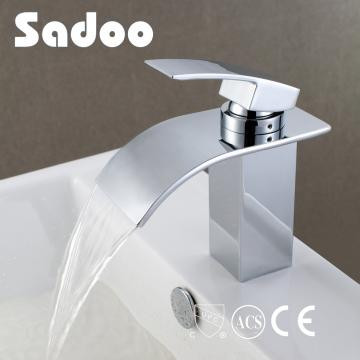 Flat Single Handle Basin Mounted Water Fall Basin Faucet
Flat Single Handle Basin Mounted Water Fall Basin Faucet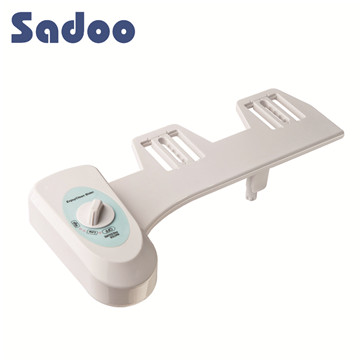 CB1000
CB1000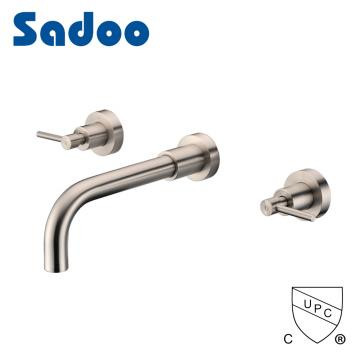 Two-handle wall mount lavatory basin faucet
Two-handle wall mount lavatory basin faucet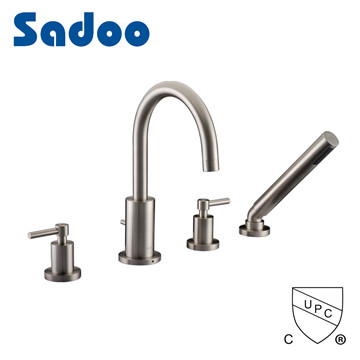 2050121BN
2050121BN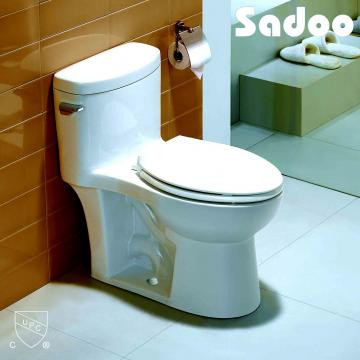 SIPHONIC ONE-PIECE TOILET S-TRAP 305MM ROUGHING INCH SD21010
SIPHONIC ONE-PIECE TOILET S-TRAP 305MM ROUGHING INCH SD21010 Wireless Bluetooth Music And Phone Shower Head
Wireless Bluetooth Music And Phone Shower Head Bluetooth Link Wireless Music And Phone Shower Head extension
Bluetooth Link Wireless Music And Phone Shower Head extension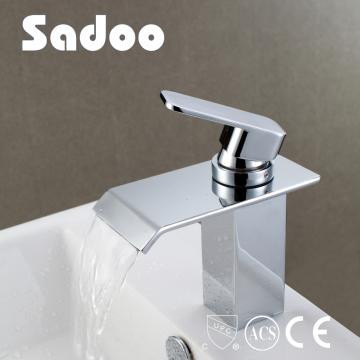 Single Bar Handle Basin Mounted Waterfall Basin Faucet
Single Bar Handle Basin Mounted Waterfall Basin Faucet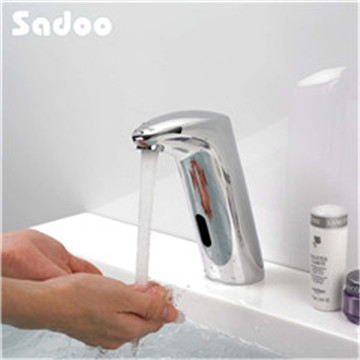 TWS301LT
TWS301LT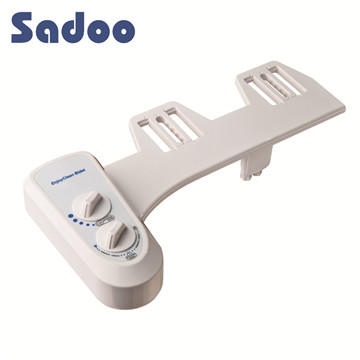 CB1200
CB1200







